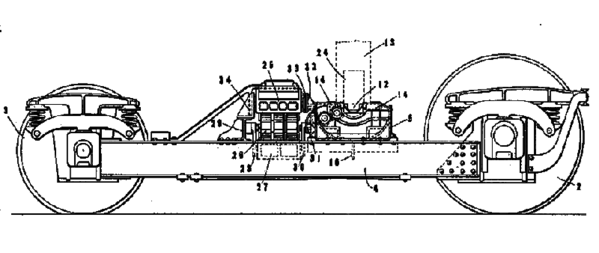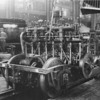No, the McKeen Cars smaller wheel on the motor truck was the rear unpowered
axle. The only oddities when it came to McKeen were the first McKeen motor car, with the front of two axles powered, and the Southern Utah McKeen Car with a triple axle front truck, two drivers and one trailing axle. All other Motor Cars used regular motor trucks (early motor trucks were I beam and cast parts, the later motor trucks were fully cast.) "McKeen" Cars U.P. #25-30 were all built after McKeen sold the rest of the stock to the U.P. The U.P. made those 5 motor cars from parts left over, and the last two, #29 and #30 were the least McKeen like, with flat noses, flat rear ends, square windows, EMC/Brill motor trucks. About the only way you could tell they were McKeen without seeing the numbers is by the drop center door.
By the way, send me an email, I want to talk to you privately.
Originally Posted by colorado hirailer:
Interestng about the "maximum traction truck", and alleged derailment problem. If
derailment was a problem, I would not think they would have been used, even in that
much less litigious time. Would seem to counter the purpose of having small diameter
pilot trucks proceeding large drivers on steam engines. Have not heard that McKeen's,
with the smaller wheels at the front of the power truck, were prone to derailing, in
spite of faults of primitive engines. I do know that double diameter truck makes scratch building a model McKeen that much more of a challenge.








